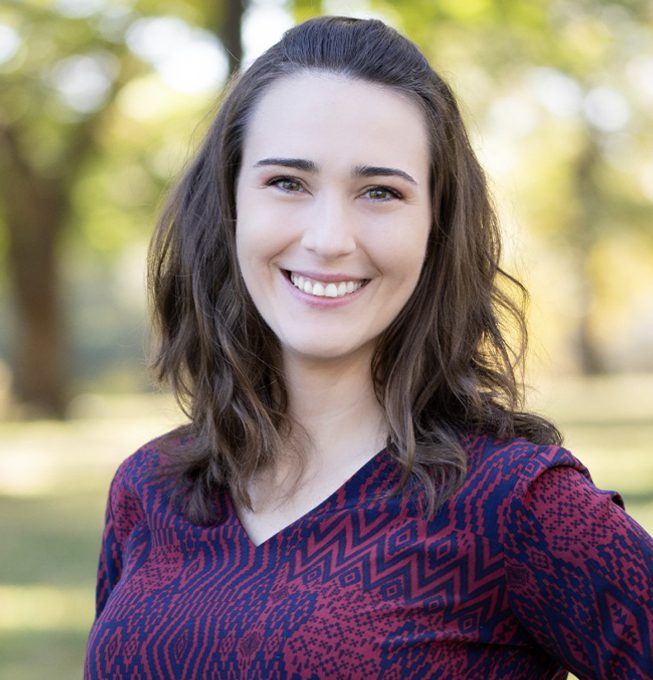April 10, 2023
Timely Strategies to Get Ahead of Student Loan Repayments

While you can’t control the legal battles over student loan forgiveness, you can take advantage of several student loan programs in 2023.
Note: On Aug. 30, 2023, this article was updated to reflect the latest developments and deadlines related to student loan planning.
As millions of Americans gear up to resume student loan payments after a three-year hiatus, many are still coming to terms with the Supreme Court’s decision to strike down the Biden administration’s plan to cancel up to $20,000 of student debt for qualifying borrowers. While borrowers won’t be receiving this relief, they are encouraged to take advantage of several programs designed to lower monthly payments and/or grant forgiveness. With interest beginning to accrue again on Sept. 1 and payments due in October, don’t delay on acting upon these time-sensitive options!
Action 1: Secure the Income-Driven Repayment Account Adjustment
In April 2022, the U.S. Department of Education (ED) announced several changes and updates to income-driven repayment (IDR) plans, including conducting a one-time adjustment of IDR payment counters. The changes announced aimed to bring borrowers closer to forgiveness after either 20 or 25 years of repayment.
While my previous article examined the details of the adjustment, there are two key ways to take advantage of these changes:
- Consolidate Non-Direct Loans into a new federal Direct Consolidation Loan:
According to the ED, “Borrowers who have commercially managed FFEL, Perkins, or Health Education Assistance Loan (HEAL) Program loans should apply for a Direct Consolidation Loan by May 1, 2023, to get the full benefits of the one-time account adjustment.” (Note: The May 1 deadline has since been extended to Dec. 31, 2023.) - Enroll in an IDR plan before the adjustment:
Borrowers with Direct Loans should receive the benefits of the IDR Account Adjustment automatically. If borrowers anticipate receiving significant retroactive credit, borrowers are encouraged to consider enrolling in an IDR plan. Credits are set to adjust in the next few months without a clear, direct deadline, so jump on this opportunity as soon as possible.
Action 2: Secure an IDR Account Adjustment Toward Public Service Loan Forgiveness
In late 2022, ED clarified that the soon-to-be updated payment count adjustments will be credited toward IDR forgiveness, and also count toward Public Service Loan Forgiveness (PSLF) if a borrower has certified their PSLF-qualifying employment prior to the account adjustment. This is a BIG deal and a remarkable opportunity for individuals who missed the Limited PSLF Waiver deadline last October to add payments to their PSLF forgiveness count. Employment can be certified by submitting an Employer Certification Form.
This clarification will also result in additional payment count credits for PSLF forgiveness hopefuls by now counting certain periods of deferment and forbearance for months beyond those provided by the Limited PSLF Waiver.
Borrowers are encouraged to stay tuned for additional improvements to the PSLF program this summer. Starting July 1, 2023, the updated program widely expands the eligibility for forgiveness. This includes:
- Allowing borrowers to receive credit toward PSLF on payments that are made late, in installments or in a lump sum.
- Counting certain periods in deferment or forbearance toward PSLF to avoid instances where a borrower may have faced confusing choices about pausing payments or getting credit toward PSLF.
- Receiving a weighted average of existing qualifying payments toward PSLF when they consolidate their Direct Loans.
- Adopting a single standard of full-time employment of 30 hours a week. Prior rules required borrowers to either work 30 hours per week at multiple jobs or whatever their employer defined as full-time.
- Requiring employers to give adjunct and contingent faculty credit of at least 3.35 hours of work for every credit hour taught.
- Allowing a qualifying employer to certify employment for a contractor if that individual is providing services that by state law cannot be filled or provided by an employee of that organization.*
Borrowers with eligible loans do not need to apply for this credit; it will be automatically computed. Borrowers possessing even the slightest notion that they could now qualify for PSLF under the previously stated regulation changes should seriously consider applying for consolidation to ensure they benefit from the one-time account adjustment and submit an Employer Certification Form for all past qualifying employment by July 1, 2023.
Action 3: Wipe the Slate Clean with the Fresh Start Program
Student loan default, typically defined as having gone at least 270 days without payment, is more common than you might think. According to Pew survey data, about a third of federal student loan borrowers have experienced default; two-thirds of this group default multiple times. In the past, defaulted borrowers lost access to short-term relief options and were prohibited from applying for additional federal grants and loans for education.
To remedy this situation, in April 2022, the Biden administration announced Fresh Start, a program to help eligible borrowers in default up to one year after the COVID-19 payment pause ends, which will happen in October.
As the namesake suggests, Fresh Start allows borrowers access to the previously denied benefits by fast-tracking the status of their loans from “in collections” to “current”. Even more critical to most borrowers, the ability to enroll in an IDR plan and apply for PSLF will be restored.
Eligible borrowers will be contacted, or they can opt into Fresh Start themselves by:
- Calling the Default Resolution Group at 1-800-621-3115 to opt into the program to rehabilitate their loans.
- Consolidating any eligible loans such as a defaulted FFEL and Perkins Loans held by the ED to Direct Loans.
- Selecting an IDR plan, after which the program administrators will enroll borrowers into a series of three trial payments. Payments must be made on time for the loans to be considered in good standing. After a long-term payment plan is agreed upon, loans will be transferred to a new loan servicer.
Action 4: Take Advantage of SAVE, the New IDR Plan
On Jan. 10, 2023, the ED published a 179-page Executive Summary proposing an amendment to the regulations governing IDR plans by specifically amending the Revised Pay As You Earn (REPAYE) plan. The ED contended its proposal would immediately reduce monthly payments and total loan outlays for current and future borrowers, especially for low- and middle-income borrowers, community college students and borrowers who work in public service.
In August 2023, the Biden administration launched the Saving on a Valuable Education (SAVE) plan, which replaces the REPAYE plan. The new SAVE plan aims to simplify access to IDR plans by reducing and nearly eliminating some of the complexities that borrowers must wade through to enroll. Although the Biden administration aims to finalize changes to the SAVE plan by the end of 2023, provisions and rules are still in a state of flux. That said, it is important for borrowers considering their student loan repayment options to stay informed of proposed key updates:

Borrowers currently enrolled in REPAYE will not have to change plans and will automatically have their monthly payments adjusted to the new SAVE plan. Unlike precedents set by previous administrations, the Biden administration proposed phasing out new enrollments into the Pay As You Earn (PAYE) and Income-Contingent Repayment (ICR) plan, while limiting the circumstances where a borrower can later switch into the most recent (2014) Income Based Repayment (IBR) plan. Future parent PLUS loan borrowers will not lose access to the ICR plan and can continue to enroll after completing a Direct Consolidation Loan.
In an effort to increase access to equitable repayment across the board, the ED estimates that borrowers’ average lifetime payments per dollar lent would decrease by 40%, with borrowers in the lowest 30% of projected lifetime earnings seeing the greatest benefit. Still, there are certain financial situations where borrowers could benefit from remaining in their current PAYE plan. Borrowers should carefully consider current payment obligations, their terms and when the right time to switch to the SAVE plan would be (if at all).
To determine how much your monthly payment would be under different plans, borrowers can use one of the calculators at Studentaid.gov, Student Loan Planner or Freestudentloanadvice.org.
Knowledge of Your Student Loan Options is Power
As a wealth advisor specializing in student loan repayment planning, I understand how confusing and frustrating the different programs, federal student loan repayment plans, policy changes and legal battles can be. With these sentiments seemingly becoming the “new normal” of student loan repayment planning, borrowers can empower themselves and their student loan forgiveness strategy by staying informed, being vigilant and taking action. If you have any questions about this complicated topic, please reach out to your advisor. If you are not currently working with one, we would love to help you. Please schedule a short phone call or virtual conversation with our Client Development team.
*Please note that the department is aware of specific circumstances where existing state laws generally prevent doctors at nonprofit hospitals in California and Texas from working for the hospital directly. This change would cover those individuals as well as any other contractor whose employment is similarly barred by state law for all medical professionals working at nonprofit hospitals in California or Texas.
For informational and educational purposes only and should not be construed as specific investment, accounting, legal, or tax advice. Certain information is based on third-party data and may become outdated or otherwise superseded without notice. Third-party information is deemed to be reliable, but its accuracy and completeness cannot be guaranteed. Neither the Securities and Exchange Commission (SEC) nor any other federal or state agency have approved, determined the accuracy, or confirmed the adequacy of this article. R-23-5348
Category
Education FundingContent Topics
About the Author

Becca Craig
Wealth Advisor
-
Related Resources
Back to All Resources -

A Guide to Federal Student Loan Forgiveness
